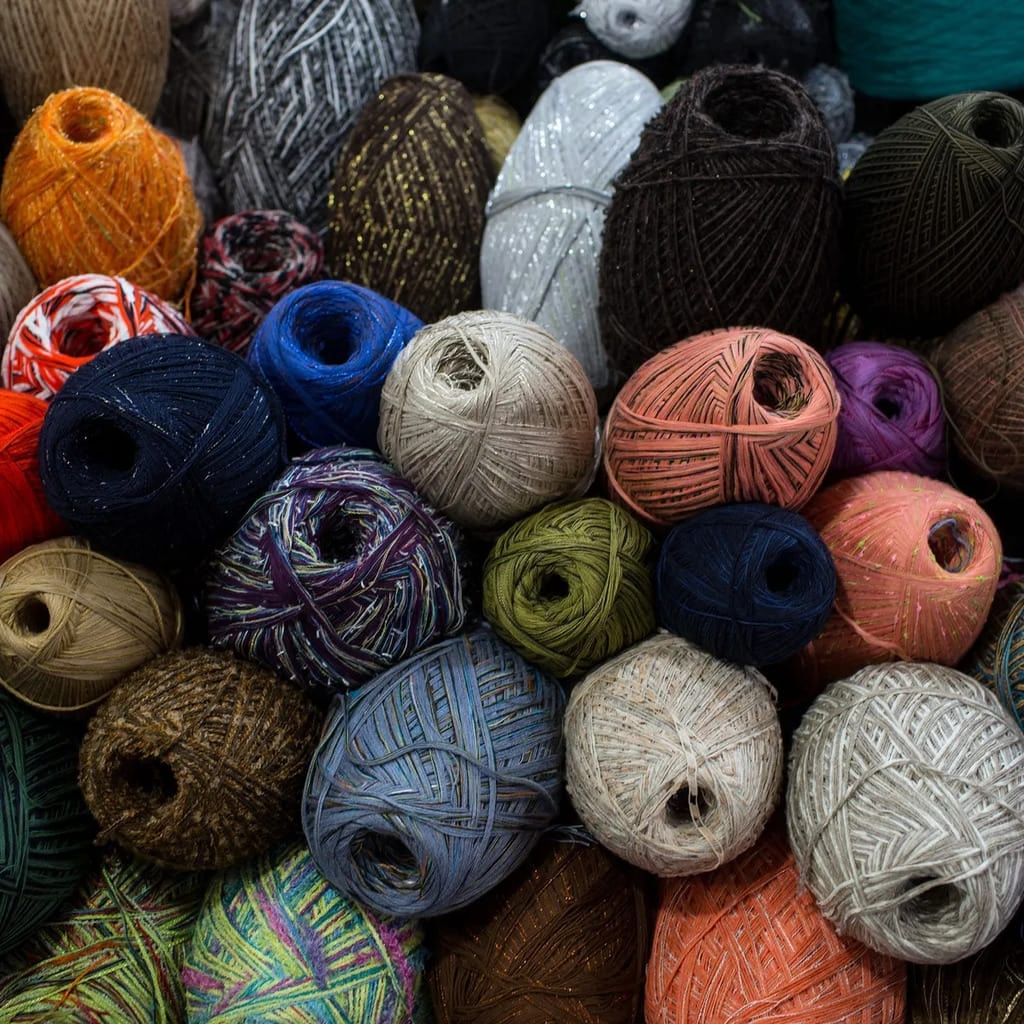Class 6 Science Question Answers - Fibre to Fabric
Q1: Name any three variety of cloth material or fabric.
Ans: Cotton, silk and wool.
Q2: What are fabrics made up of?
Ans: Yarns.
 Yarns
Yarns
Q3: Name the two types of fibres.
Ans: Natural fibres and synthetic fibres are the two types of fibres.
Q4: Give two examples of natural fibres.
Ans: Cotton and wool
Q5: Silk and wool are ______________ fibres.
Ans: Natural
Q6: Wool is obtained from the fleece of sheep or goat. (TRUE/FALSE)
Ans: True
Q7: Silk fibre is drawn from cocoon of ______________.
Ans: Silkworm.
Q8: Natural fibres are obtained from ______________and______________.
Ans: Plants and animals.
Q9: Polyester and nylon are ______________fibres.
Ans: Synthetic.
Q10: Give two examples of synthetic fibres.
Ans: Nylon and acrylic are synthetic fibres
Q11: Cotton and nylon both are natural fibres. (TRUE/FALSE)
Ans: False
Q12: Name two fibres obtained from plant.
Ans: Cotton and jute are obtained from plants.
Q13: Name two fibres obtained from animals.
Ans: Wool and silk are obtained from animals.
Q14: Where is cotton wool grown?
Ans: Cotton wool is grown in places having black soil and warm climate.
Q15: Fruits of cotton plants are called _____________
Ans: Cotton bolls
Q16: Cotton plants are grown in places having _____________soil.
Ans: Black
Q17: From where jute fibre is obtained?
Ans: Jute fibre is obtained from the stem of jute plant.
Q18: From cotton bolls cotton is usually picked by _____________.
Ans: Hand
Q19: In which season jute plant is cultivated?
Ans: Jute plant is cultivated during rainy season.
Q20: Separating the cotton fibres from the seeds is known as _____________.
Ans: Ginning
Q21: Name two states of India in which jute is grown.
Ans: West Bengal and Bihar
Q22: The jute plant is harvested at_____________ stage.
Ans: Flowering stage
Q23: Name one state in India in which cotton is grown.
Ans: Maharashtra
Q24: What is spinning?
Ans: The process of making yarn from fibres is called spinning
Q25: Name one device used for spinning.
Ans: Charkha
Q26: Fabrics are made from yarns by the process of_____________ and_____________.
Ans: Weaving and knitting
Q27: Weaving is the process by which fabrics are made from yarns.(TRUE/FALSE)
Ans: True
Q28: Weaving of fabric is done on___________.
Ans: Looms
Q29: What is done in knitting?
Ans: In knitting, a single yarn is used to make a piece of fabric.
Q30: How can looms be operated?
Ans: Looms are either hand operated or power operated.
Q31: Give an example of any clothing made up of knitted fabrics.
Ans: Socks
Q32: Name any two items made up of jute fibres.
Ans: Jute bags and ropes
Q33: Name any two plants which give natural fibres.
Ans: Flax and cotton plant
Q34: By weaving _____________ are made from _____________.
Ans: Fabrics, yarns
Q35: _____________is the process of making yarn from fibres
Ans: Spinning
Q36: Charkha was popularised by _____________as part of independence movement.
Ans: Mahatma Gandhi
Q37: What is the difference between wool and cotton fibres?
Ans: Wool is obtained from animals whereas cotton is obtained from plants
Q38: Write the name of two items made from coconut fibres.
Ans: Mats and baskets
|
26 videos|28 docs|9 tests
|
FAQs on Class 6 Science Question Answers - Fibre to Fabric
| 1. What is fibre to fabric? |  |
| 2. What are natural fibres? |  |
| 3. How is fabric made from fibres? |  |
| 4. What are the different types of synthetic fibres used in fabric production? |  |
| 5. What is the significance of finishing in fabric production? |  |
|
26 videos|28 docs|9 tests
|



















